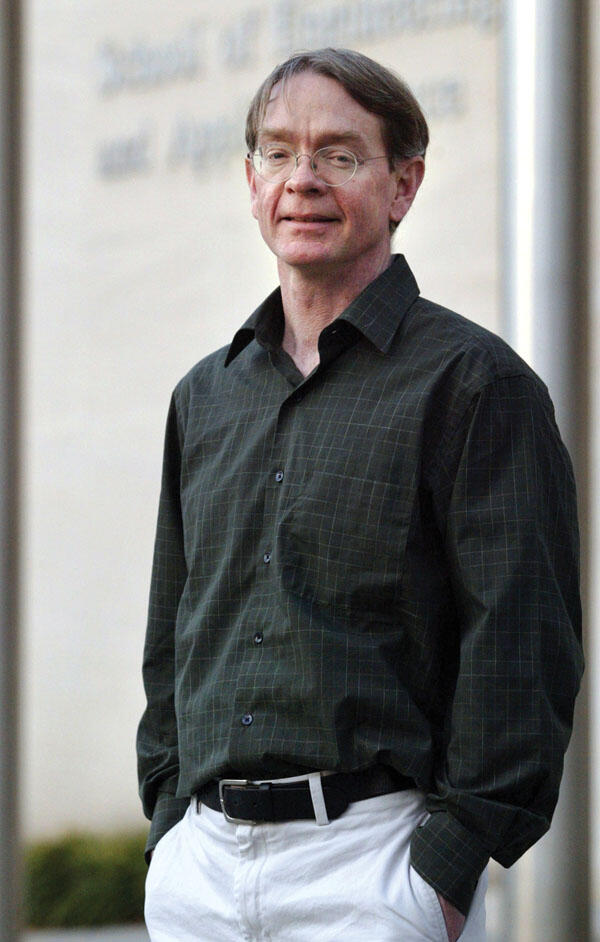The question on James Smith's mind is a large one: How do urban environments affect the atmosphere and climate? To find answers, the civil and environmental engineering professor is looking closely at urban aerosols, tiny particles suspended in the air above cities, to see how they alter precipitation.
Using data from a long-term National Science Foundation study in Baltimore, Smith and graduate student Alex Ntelekos have shown that aerosols, along with other factors like the thermal effects of urban heat islands, contribute to the strong, organized thunderstorms that flood cities in the northeastern United States. Smith’s team is moving on to collect data in New York and Beijing — two cities that have shown very different aerosol effects — through collaborations with MIRTHE (Mid-Infrared Technologies for Health and the Environment), a multi-university research center based at Princeton. The center, directed by electrical engineering professor Claire Gmachl, develops sensors using laser technology.
In New York, Smith says aerosols serve as “cloud condensation nuclei,” or seeds around which cloud droplets form. Those cloud droplets ultimately build rain droplets and contribute to rainstorms. There are some “really interesting clues” about aerosols for cloud formation, according to Smith. “What we would like to know more about are the details of the chemical composition and size distribution of the aerosols,” he says. “It’s pointing to a mechanism of precipitation formation in which urban aerosols may, in fact, play an important role.”
Engineers from Princeton and City College of New York are working on monitoring systems that can provide more detail about the aerosols, and Smith hopes to embed that detail in modeling systems that simulate urban weather patterns.
Later this year, Smith and graduate students from his research group will begin measuring aerosols and trace gases in Beijing during the 2008 Summer Olympics, in collaboration with the Beijing Institute for Atmospheric Physics. The group will use atmospheric models that combine the Princeton data with other measurements to monitor air quality during the Olympics.
In Beijing, the aerosols generated by rapid industrialization and urbanization have caused a dramatic change in heavy precipitation during the last three decades. But instead of intensifying rain events, the aerosols have contributed to a significant decrease in rainfall. The reason, researchers hypothesize, is that aerosols have stabilized the atmosphere by reflecting back some of the sun’s rays. Less rain could be detrimental to the city’s water supply.
Aerosol effects are “very much tied to the details of the aerosol populations,” Smith explains. “In China, the emissions are so large that this radiative effect plays a very important role. The differences are instructive.”
The Beijing project will combine valuable environmental science with a core goal of MIRTHE — developing better sensors. “It’s an exciting process, working across disciplinary boundaries,” Smith says. “[We’re] bringing in different elements with both the technology side and the side where we can address really interesting science problems that are of societal importance.”













No responses yet